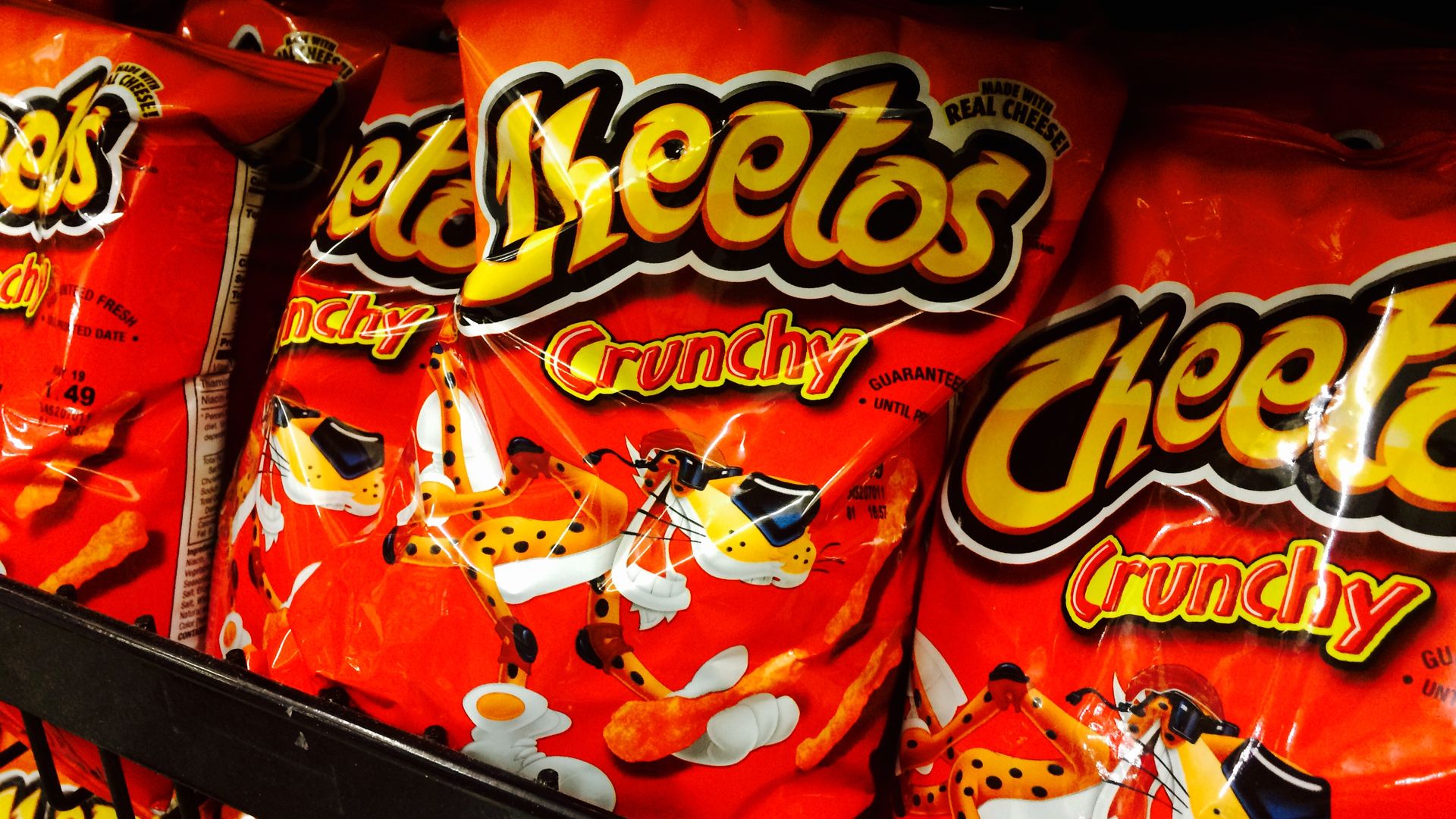| | | | | | | | | | | Axios What's Next | | By Jennifer A. Kingson, Joann Muller and Erica Pandey ·Feb 14, 2022 | | Do most people really like Valentine's Day? We at What's Next have our doubts. - Thanks for all the great feedback on the stuff in our newsletter!
- Our piece on President Biden urging states to build electric charging stations prompted Fredrick Lee of Inglewood, California, to write: "States like California do not need more cars on the streets. We need a bold (and controversial) action to reduce lanes and build autonomous transit systems that provide safe, clean and efficient ways to get around in cities."
- What do you think? Email: whatsnext@axios.com
Today's Smart Brevity count: 1,074 words ... 4 minutes. | | | | | | 1 big thing: Traffic is back, but rush hour isn't the same |  Data: TomTom Traffic Index 2021; Chart: Jacque Schrag/Axios The pandemic didn't kill rush hour in America — it just spread traffic throughout the day, Joann writes. What's happening: The rise of home offices and flexible work hours means there were fewer cars on the road last year during traditional peak times — particularly the morning commute, according to TomTom Traffic Index 2021. - In some cities, there was a new "late morning peak" around 11am.
- In others, the evening rush started earlier — as early as 3 or 4pm.
Why it matters: The change in traffic patterns could be one of the lasting trends of the pandemic, but a lot will depend on whether remote work sticks around. Pandemic-driven traffic changes vary by city, often depending on the particular city's COVID restrictions and the nature of its workforce, TomTom data specialist Jeroen Brouwer tells Axios. - While office employees stopped commuting in places like Silicon Valley, other workers still have to drive to their shifts at hospitals, factories and other workplaces.
The big picture: Traffic congestion isn't as bad as it was before COVID upended our weekday commute, but it's still stealing our time. - In Minneapolis, drivers spent almost a full day — 23 hours — in traffic last year.
- In Atlanta, Tampa, Florida, and Washington, D.C., drivers lost two days to traffic.
- New Yorkers? More than three days.
How it works: TomTom collects hundreds of millions of anonymized GPS signals from cars and smartphones around the world to analyze traffic in more than 400 cities. - It calculates a baseline for free-flowing traffic at midnight in each city, then compares traffic at other times of the day to determine congestion levels, including morning and evening peaks.
- New York, with a 35% congestion rate, is America's most congested city. That means a 30-minute trip will take 11 minutes longer when traffic is bad.
- But here's a surprise: Globally, New York is the only U.S. city ranked in the world's top 50 for congestion — it's No. 43. Istanbul has the worst traffic jams on the planet, with 142 hours lost in traffic per year.
Share this story. |     | | | | | | 2. U.S. testing robot dogs to help patrol the border |  | | | Photo: Courtesy of Ghost Robotics | | | | Robot dogs could soon help patrol the U.S.-Mexico border, Axios' Russell Contreras writes. Why it matters: Both political parties have long said U.S. Customs and Border Protection needs more technology to monitor the 2,000-mile terrain, but some Democrats and advocates say the border is already overly militarized. Driving the news: A research and development arm of the U.S. Department of Homeland Security announced last week it has been working with the Philadelphia-based company Ghost Robotics to develop a robot dog for the border. - The dogs can transmit real-time video and other data back to human operators while climbing over sand, rocks and hills.
- The project has been under development for two and a half years. It's unclear how many robot dogs will be deployed, when and where.
Yes, but: Robot dogs are controversial. - The use of one for a hostage situation at a public housing building in Manhattan caused a fierce backlash among residents and politicians who saw it as alienating and a waste of taxpayer money.
What they're saying: "It is really sad to see how much money has been invested in military technology to seal the border," Fernando García, executive director of the immigrant advocacy group Border Network for Human Rights, told Axios. But the use of high-tech robot dogs along the border probably isn't violating any constitutional rights, Michael Olivas, the emeritus William B. Bates distinguished chair in law at the University of Houston Law Center, told Axios. - CBP has introduced all sorts of new technology along the border, from small drones to airplanes equipped with high-tech sensors. Case law has protected the use of such technology, Olivas said.
- "In fairness, if there are people who are lost in the Sonoran Desert, these can also be lifesaving."
Read the full story. |     | | | | | | 3. Big names join hunt to find missing carbon emissions |  | | | Illustration: Megan Robinson/Axios | | | | A new initiative led by Microsoft and the ClimateWorks Foundation aims to improve methods for tracking how much greenhouse gases companies and countries are emitting, Andrew Freedman writes in Axios Generate. Why it matters: Corporate leaders and policymakers are realizing that current carbon accounting and reporting methods may be missing huge amounts of emissions. Driving the news: The Carbon Call initiative, with more than 20 organizations, is an effort to develop common, reliable and interoperable carbon emissions accounting systems. The big picture: Determining how much greenhouse gases each country is emitting, along with companies — some of which have carbon footprints that rival nation-states — is no easy task. - For companies, reporting is plagued with inconsistencies in how they measure and share their emissions tallies, along with scientific uncertainties and data quality problems.
Read the rest. |     | | | | | | A message from Axios | | Smart, brief writing will transform your internal comms | | |  | | | | Join us of Feb. 17 to learn the methodology of Axios' Smart Brevity® style and specific techniques you can use in your own communications. You'll learn about: - The research behind Smart Brevity
- The impact of Smart Brevity on engagement
- Axios HQ, our software, that helps users easily apply the methodology
Sign up | | | | | | 4. What we're reading |  | | | Photo: Geri Lavrov/Contributor/Getty Images | | | | Megan Thee Stallion's new video will debut on a Cheeto (Fast Company) - When Snapchat's new augmented reality lens is aimed at a Cheeto or Dorito, it apparently delivers a surprise musical treat.
To confront gun violence, San José, California, tries requiring insurance (Smart Cities Dive) - San José recently approved a "first-in-the-nation solution to reduce gun violence": Requiring liability insurance and a $25 annual fee for gun ownership. The latter could raise about $1.3 million a year and pay for a nonprofit foundation aimed at addressing gun problems.
Confederate Street Names Bring Lower Home Prices (Bloomberg CityLab) - Living on one of the more than 1,400 streets named for Jefferson Davis, Robert E. Lee, Thomas "Stonewall" Jackson and other Confederate figures means it'll take longer to sell your house — and you'll get about $7,000 less on a $240,000 home, a study finds.
|     | | | | | | 5. 1 🥑 thing | | If you snacked on some guacamole during the Super Bowl or you're making your Valentine avocado toast for breakfast in bed this morning, you're not alone, Erica writes. Stunning stat: Americans' per capita avocado consumption has doubled in the past decade, Retail Brew reports. We each now eat an average of nine pounds of avocados a year. Here's the rub: All that demand, coupled with those supply chain issues you keep hearing about, are driving avocado prices up. - The standard nine-kilogram (20-pound) box of avocados hit a record-high price of $26.23, notes Retail Brew, up from about $20.25 in February 2021.
|     | | | | | | A message from Axios | | Smart, brief writing will transform your internal comms | | |  | | | | Join us of Feb. 17 to learn the methodology of Axios' Smart Brevity® style and specific techniques you can use in your own communications. You'll learn about: - The research behind Smart Brevity
- The impact of Smart Brevity on engagement
- Axios HQ, our software, that helps users easily apply the methodology
Sign up | | | | Was this email forwarded to you? Get your daily dose of What's Next magic by signing up for our free newsletter here. |  | Bring the strength of Smart Brevity® to your team — more effective communications, powered by Axios HQ. | | | | | | Axios thanks our partners for supporting our newsletters. If you're interested in advertising, learn more here.
Sponsorship has no influence on editorial content. Axios, 3100 Clarendon Blvd, Suite 1300, Arlington VA 22201 | | | You received this email because you signed up for newsletters from Axios.
Change your preferences or unsubscribe here. | | | Was this email forwarded to you?
Sign up now to get Axios in your inbox. | | | | Follow Axios on social media:    | | | | | |
No comments:
Post a Comment